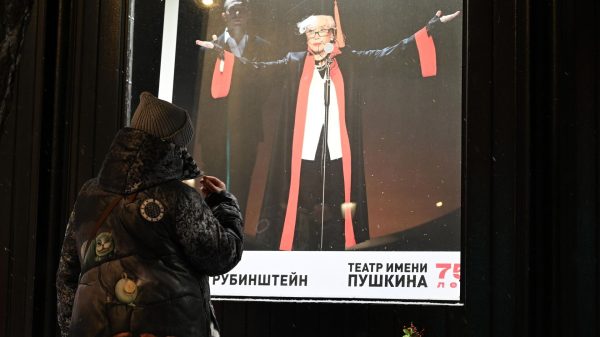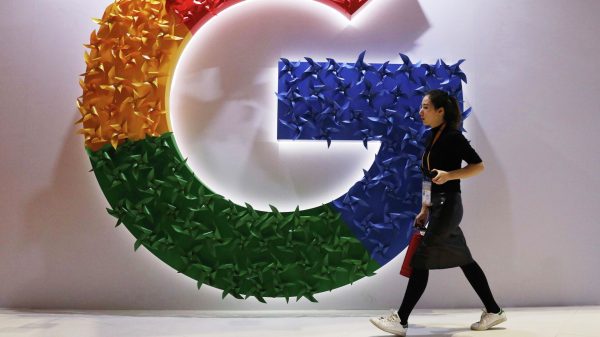For a while, though rarely now as I get older, white women used to tell me I was “good-looking for an Asian”. I used to believe it myself. Until I moved to Korea when I was 23, visiting for the first time since my adoption at age two, I dated only white women. As an adoptee with white parents, whiteness was the model of desire I knew. “For an Asian” seemed as desirable as I could get.
During my childhood, my parents insisted that we were the same as any other family – which, because they were white, I took as saying I must be as white as them to be their son. “If I were white, I would be accepted” became “because I must be accepted, I must be white”.
I wasn’t able to see myself clearly. I mean this literally. One day, I stood at the mirror and suddenly realized that I was Asian. I can’t remember where this thought came from, but it is a realization that is common for transracial adoptees with white parents. I used to wonder what took me so long to see myself. Now I wonder what I saw before that day. A white boy with white skin? Or did I simply assume that the image in the mirror was white, because it was normal and normal was whiteness?
.
It wasn’t my gaze with which I looked, of course. It was my parents’. I saw who they wanted me to see. That is the thing about desire: it comes from the outside. Desire is a story in which you are a character.
•••
When the film The Big Sick, starring Kumail Nanjiani, came out in 2017, it seemed like progress for Asian American representation – yet it received mixed reactions from Asian American critics, especially south Asian American women who wrote about the film’s stereotypes of brown women. The most difficult sequence to watch is a montage that switches back and forth between shots of Kumail – the main character – courting a white woman, Emily, and shots of him tossing images of brown women into a cigar box one after the other, each deemed unworthy by comparison.
It’s a striking sequence, making literal Kumail’s rejection of brown women in exchange for whiteness. The film heavily links Kumail’s masculinity to the performance of race and sexuality – he picks up Emily after she jokes that he might be good in bed and he writes her name in Urdu. He hides his relationship with Emily from his parents, and when he finally tells them about her, he is the one who connects his love for Emily to his nationality. In the face of their disappointment, he demands to know why they immigrated in the first place if they didn’t want him to become “American”, completing his association of Americanness with whiteness.
As an isolated case, the film would still be problematic, but what really frustrates critics like Tanzila Ahmed and Amil Niazi is how frequently stories about Asian American masculinity rely on sex with a white woman. As early as 1982, scholar Elaine Kim noted this trope in Asian American literature, where the symbol of the white woman indicates an Asian American male character has been accepted into society or not. If the terms of masculinity are white, women of color are excluded.
But so are all people of color.
In fact, Kim found that one other group of writers also symbolized white women as access to American masculinity: straight white male writers writing about Asian male characters.
In other words, the story of how we view Asian American masculinity can be understood as a story about white male insecurity.
•••
Perhaps some history is necessary. The current stereotype of Asian American men as “emasculated”, “weak”, and “effeminate” can be traced back to white insecurities over the male Chinese labor force during and after the construction of the transcontinental railroad in the late 19th century.
Chinese railroad workers were both valued and devalued as men. Railroad work was seen as exclusively male, and Chinese men were expected to work more, in more dangerous situations, and take less pay than white counterparts. In addition, it was cheapest to prohibit wives and children from joining them, which also conveniently limited population growth (the 1875 Page Act legalized this prohibition). By 1880, there were 27 Chinese men for every one Chinese woman, and with the railroad completed, the economic value of Chinese masculinity decreased while white fear of Chinese masculinity increased.
Out of this context, two different stereotypes of Asian American men emerged: emasculation and hypermasculinity (two sides of the same racist, misogynist, homophobic coin).
The current stereotype of Asian American men as ’emasculated’, ‘weak’, and ‘effeminate’ can be traced back to white insecurities
Leading up to the 1882 Chinese Exclusion Act, which banned Chinese immigration completely, much of the propaganda depicted Chinese men as out to rape and pillage. Specifically, to rape white women and pillage white men’s jobs. White masculinity depended on the sexual and economic possession of white women. By 1907, white masculinity’s fear of its own emasculation produced anti-miscegenation laws that promised to revoke citizenship from any white woman who married an Asian American.
If the hypersexualization of Asian American males was an expression of white male insecurity, their desexualization was an attempt to ease that insecurity.
Despite depictions of Chinese men as desperate for white women, they were also represented as asexual or homosexual (both considered antithetical to white masculinity). Labor and immigration laws further contributed to the “emasculation”, as Asian Americans were forced to take any work they could get, namely the work white men didn’t want, often service jobs like cooking and laundering. (This is where the stereotype of the Chinese American laundromat comes from.) This work was seen as “women’s work”, and further associated Asian American men with sexual and gender deviance. The effect helped both to address white male anxiety and to establish white heterosexual masculinity (and patriarchy) as the norm.
•••
Anxiety haunts desire.
In 2014, Elliot Rodger, half white and half Asian American, killed six people and injured 14 in an act of revenge against white women.
“It’s an injustice,” he explained in a 100,000-word manifesto, that he was still a virgin, a condition he linked to being Asian American. In a particularly self-hating passage, he writes: “Full Asian men are disgustingly ugly and white girls would never go for you … You’ll never be half white and you’ll never fulfill your dream of marrying a white woman.”
In his twisted mind, Rodger managed to turn his self-hatred into the beliefs both that he had a right to white women’s bodies because he was white and that he was not attractive to white women because he was Asian. Neither of these inventions, notably, are really about Asian American desire at all. These are problems of the limited male imagination. Rodger’s was especially problematic.
In Lacanian psychoanalysis, a person’s desire is not self-made but rather is “the desire of the other”. You experience this phenomenon when you dress as someone else would like you to dress, or when you act in a way you hope will attract the attention of your crush.
That is the thing about desire: it comes from the outside. Desire is a story in which you are a character
This theory of desire seems especially useful in explaining the model minority stereotype – that Asian Americans find success by working hard and following the rules – and why some Asian Americans perform the stereotype so dutifully. To be the model minority is to fulfill the desire of the other. That is, you perform the stereotype because it is the performance that whiteness wants from you. Just as I saw in the mirror what my parents wanted from me.
What makes the performance so alluring is that you also feel yourself become desirable to yourself. We internalize the other’s gaze whether the other is our beloved, or society and soon enough the desire seems like our own.
For straight Asian American men, this means wanting to be wanted in the way white heteronormative men are wanted. If an Asian American man can win the love of a white woman, he thinks, then he might have a claim to America in all its whiteness and straightness and maleness after all.
•••
Such is the storyline of Adrian Tomine’s 2007 graphic novel, Shortcomings, about an Asian American man, Ben Tanaka, so obsessed with sleeping with a white woman that his relationship with an Asian American woman goes to hell.
Ben begins the book as essentially the model minority – he’s in a relationship with an attractive Asian American woman, he lives comfortably in California, he owns a movie theater and has enough money to drop everything and fly to New York on a whim – but he is far from happy. Throughout, he makes snarky jokes at the expense of his own perceived emasculation (such as how small his penis is). He has internalized the white male gaze so completely that he doesn’t even need anyone else to put him down; he can do it himself. Like Rodger, he blames his unhappiness on not being able to have sex with a white woman. He doesn’t feel masculine enough. He doesn’t feel wanted enough.
If an Asian American man can win the love of a white woman, he thinks, then he might have a claim to America in all its whiteness and straightness and maleness after all
Tomine is clear that Ben is no hero, that he is his own biggest problem. The tone is critical. Ben doesn’t get any happier – even after he fulfills his dream of having sex with a white woman, it doesn’t make him any more masculine. The dream, and the masculinity, was never his to begin with. The best he can do, in the wreckage of his life, is to see that it has been a wreck for a while. The book ends ambiguously, with Ben in an airplane, flying home, perhaps ready to see himself for the first time.
It’s necessary to link Asian American masculinity to the model minority myth and a hierarchy of racist stereotypes. Deeming Asian Americans the “model minority” was a divide-and-conquer strategy, to pit Asian Americans against African Americans during the civil rights movement. African American masculinity has long provoked white fear of emasculation. Pitting a desexualized Asian American model minority against the hypermasculine stereotype of Black men marks (yet) another attempt to make Black men responsible for white male fear.
In the white imagination, Asian American masculinity symbolizes what white men fear about being less “masculine” than Black males. That is, that societal power may come at the cost of sexual power. The model minority Asian American male might become a doctor or lawyer or engineer, but he can’t get the girl.
This is the imagination with which Kumail courts Emily in The Big Sick. Though he finds some kind of love in the end, it’s hard not to see in that love the images of all the brown women that he threw aside (and, eventually, burned).
•••
When I returned to Korea for the first time since my adoption, I met a woman I would love for the rest of her life. I mean, we got married. I also mean, she died young. It was in her desire that I was able to see what “for an Asian” meant. I had been carrying those three words at the end of every sentence. I had needed them to remind me that someone else was looking. Then I didn’t any more.
Widowed now, I desire in the shadow of desire. When I dress up, my kids ask who I’m trying to impress. No one will see you, they say. They wear their pyjamas all day, except on our daily walk. I say I will see myself, but they are not convinced.
Once, in a bar, a white woman tried to pick me up with the line, “Once you go Asian, you never go Caucasian.” A bad rhyme, I thought. That was all she saw. So I ran.
I mean this literally: I opened the door and fled.























































Свежие комментарии